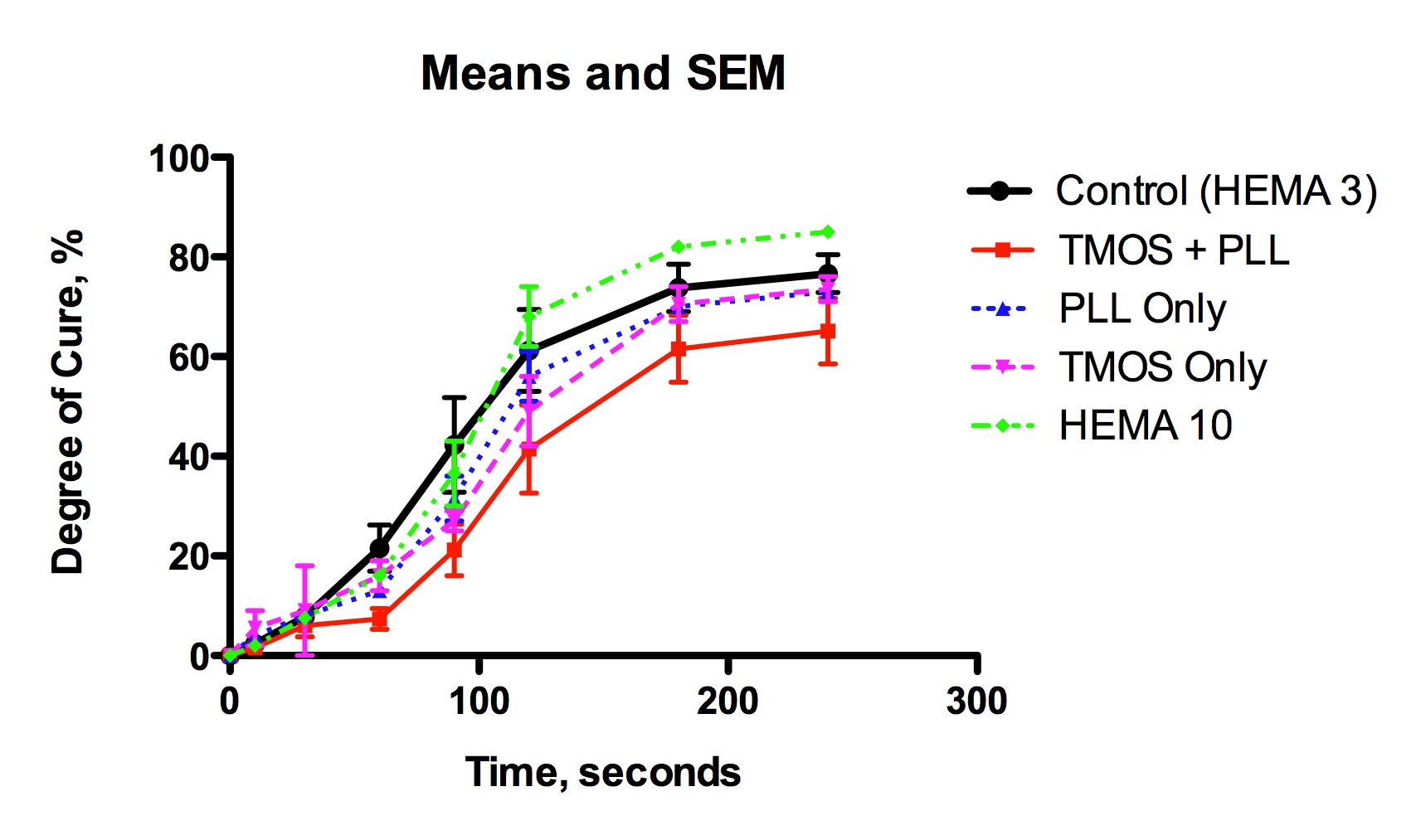ABSTRACT: 2366
Effect of Biosilicification on Polymerization of 2-Hydroxy Ethylmethacrylate
| J.-S. CHO, M. ADVINCULA, R.B. KAZEMI, and A.J. GOLDBERG, University of Connecticut Health Center, Farmington, USA | |
Click on images to view full size. Introduction: It has recently been shown that silica can be formed from precursors such as tetramethylorthosilicate (TMOS) by amine-containing macromolecular catalysts, such as polylysine (PLL). This reaction is being investigated for in situ mineralization to seal dentin tubules or restorative-tooth interfaces. The strategy could be used in conjunction with resin bonding, but the effect on polymerization has never been examined. Objectives: To determine if biocatalyzed silica, the precursor or catalyst affect the photo-polymerization of 2-hydroxyethylmethacrylate (HEMA). Methods: In three experimental groups the following biosilicification constituents were spin coated on NaCl or BaF2 discs, followed by a coating of HEMA (98%, Aldrich) with 3wt% photo-initiator (CQ/DMP): (I) silica coating prepared by combining 25-30,000MW PLL + 100mM TMOS, (II) PLL-only, and (III) TMOS-only. Two control groups consisted of HEMA-3wt% and HEMA-10wt% photo-initiator. A second matching disc was placed over each sample and cured for various intervals from 0-240 seconds (500mW, Spectra-Lite 990, Pentron). After each interval the degree of cure of HEMA (DC) was determined with FTIR in transmission mode (Tensor 27, Bruker). DC for the five groups (n=3-7) was compared at 90s and 240s with repeated measures ANOVA. Results: All DC-time curves had similar sigmoidal shapes (Figure). Final DC were: PLL+TMOS 65.1±17.4%, PLL-only 73.7±1.2%, TMOS-only 76.3±5.5, HEMA-3wt% 76.6±8.5%, HEMA-10wt% 83.0±3.6%. There was the expected increased DC from 90s to 240s (p<0.0001), but no time-group interaction (p=0.1735). There were no statistically significant differences among the groups (p=0.3796). Conclusion: While there appears to be a retardation of HEMA polymerization in the presence of TMOS and/or PLL, the 90s and final DC were not affected. Accordingly, the silicification reaction could be conducted before, during or after polymerization, suggesting a number of sealing/reinforcing strategies. Effects using other dimethacrylates and on dentin surfaces, as well as alternative biocatalyzed mineralization systems, warrant study.
| |
| Seq #222 - Dental Polymers 3:30 PM-4:45 PM, Friday, July 4, 2008 Metro Toronto Convention Centre Exhibit Hall D-E | |
|
Back to the Dental Materials 5: Polymer-based Materials - Chemistry and Composition Program | |
©Copyright 2008 American Association for Dental Research. All Rights Reserved.
